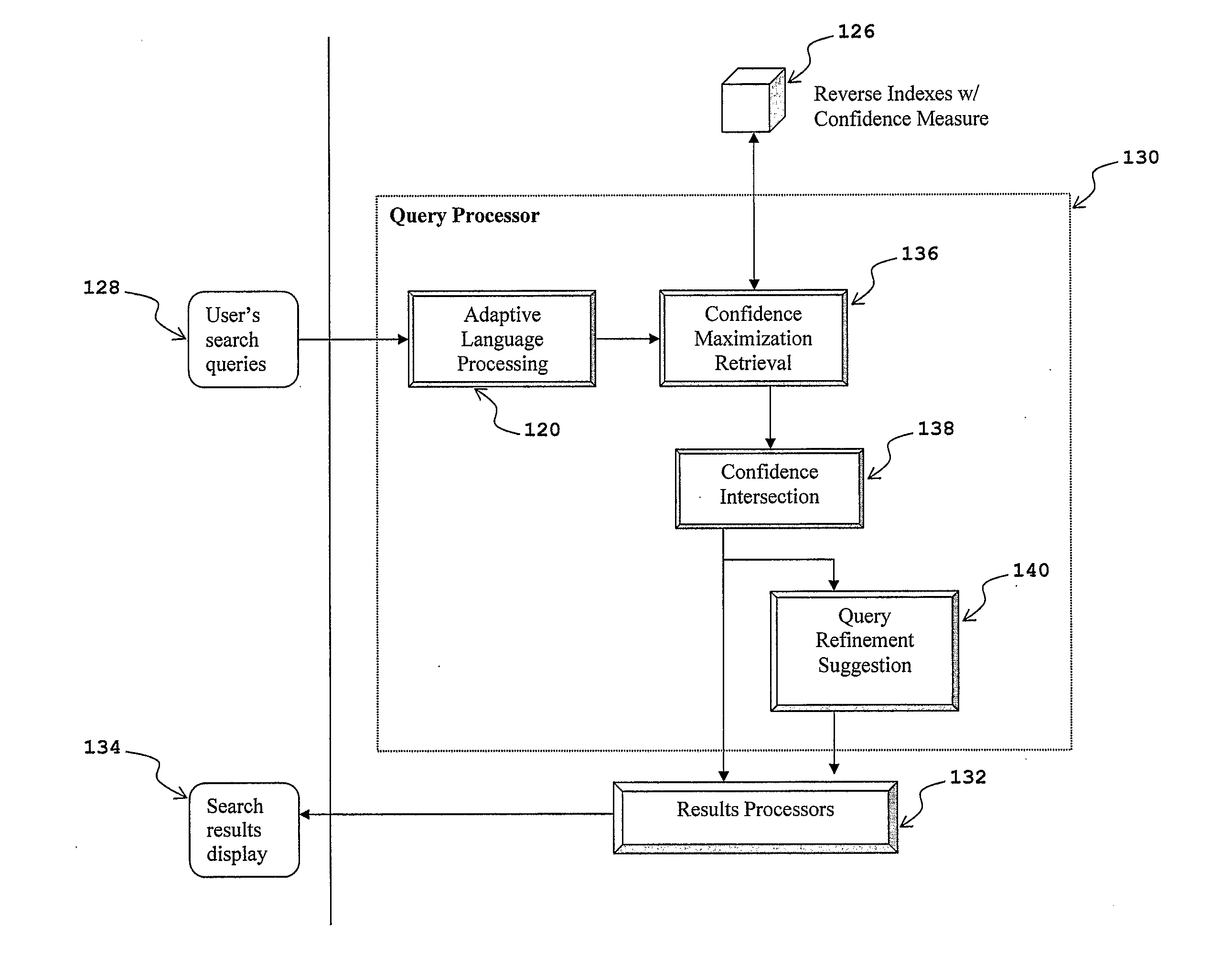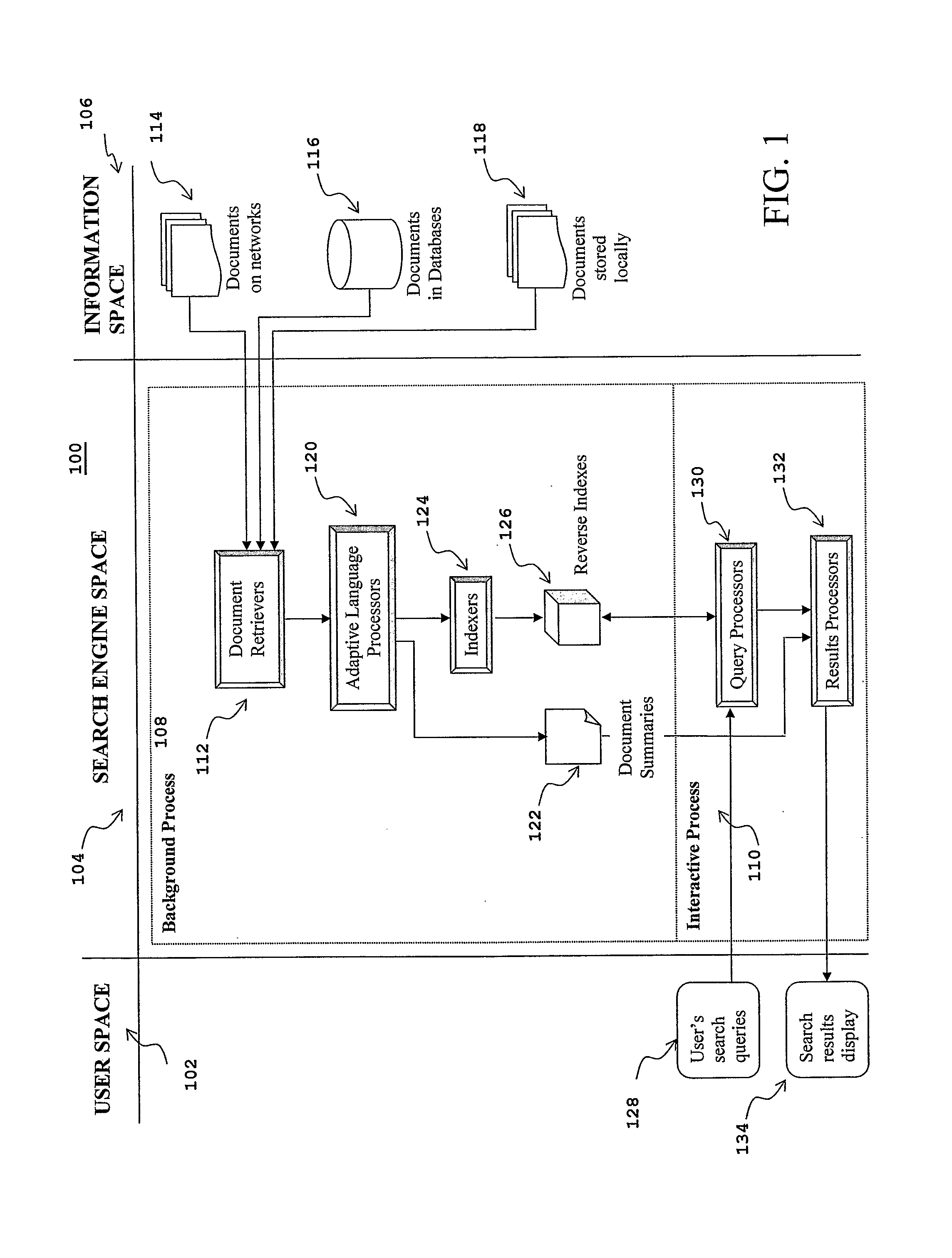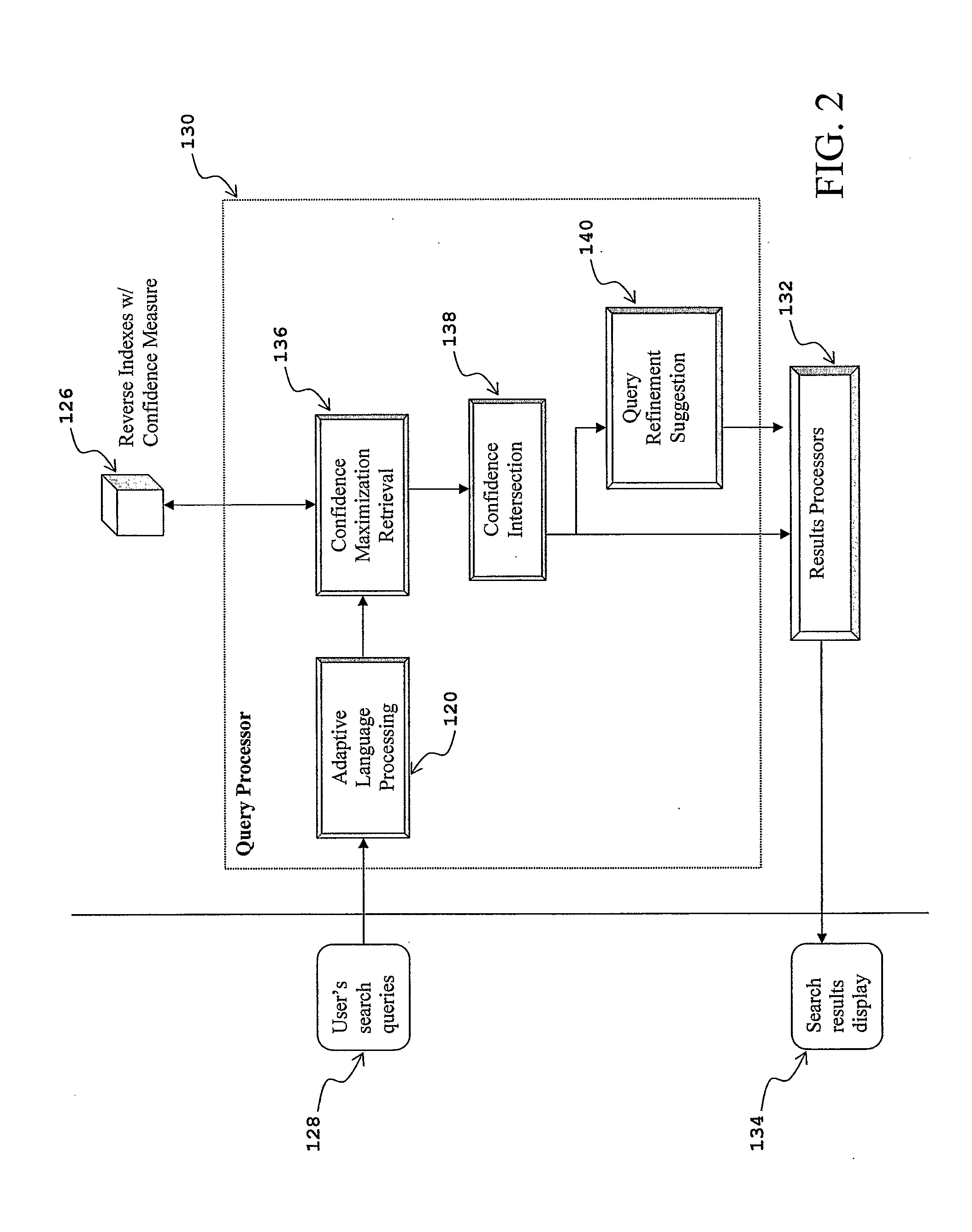Method For Information Retrieval
a technology of information retrieval and methods, applied in the field of information retrieval methods, can solve problems such as difficult tasks, and achieve the effect of improving the resolution of ambiguities
- Summary
- Abstract
- Description
- Claims
- Application Information
AI Technical Summary
Benefits of technology
Problems solved by technology
Method used
Image
Examples
Embodiment Construction
[0058]FIG. 1 schematically illustrates a system and method for information retrieval 100. The system and method 100 is generally divided into three spaces including a user space 102, a search engine space 104, and an information space 106. The search engine space 104 is divided into a background process 108 and an interactive process 110. Indexing of documents occurs in the background process 108 while user queries and their associated results are part of the interactive process 110. Referring to FIG. 1, a document retriever 112 is given access to the information space 106 such that documents are transferred or otherwise communicated to the search engine space 104. In the context of the present invention, the term document refers to actual documents or web page(s) or the like that are searchable using a search engine. Documents may be located on networks 114 (e.g., the Internet), within one or more databases 116, or stored locally 118 on a computer (e.g., on a local drive or other s...
PUM
 Login to View More
Login to View More Abstract
Description
Claims
Application Information
 Login to View More
Login to View More - R&D
- Intellectual Property
- Life Sciences
- Materials
- Tech Scout
- Unparalleled Data Quality
- Higher Quality Content
- 60% Fewer Hallucinations
Browse by: Latest US Patents, China's latest patents, Technical Efficacy Thesaurus, Application Domain, Technology Topic, Popular Technical Reports.
© 2025 PatSnap. All rights reserved.Legal|Privacy policy|Modern Slavery Act Transparency Statement|Sitemap|About US| Contact US: help@patsnap.com



